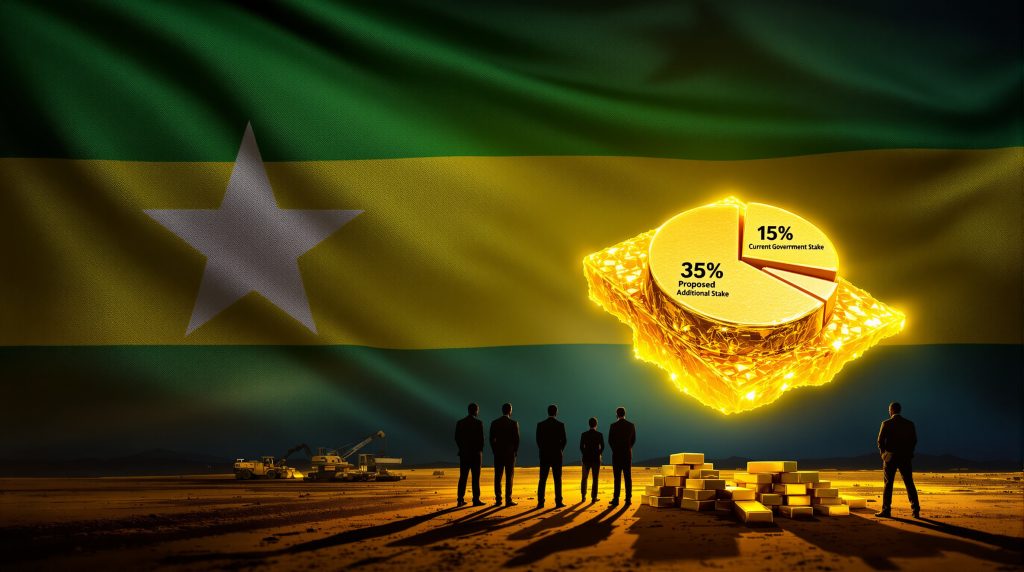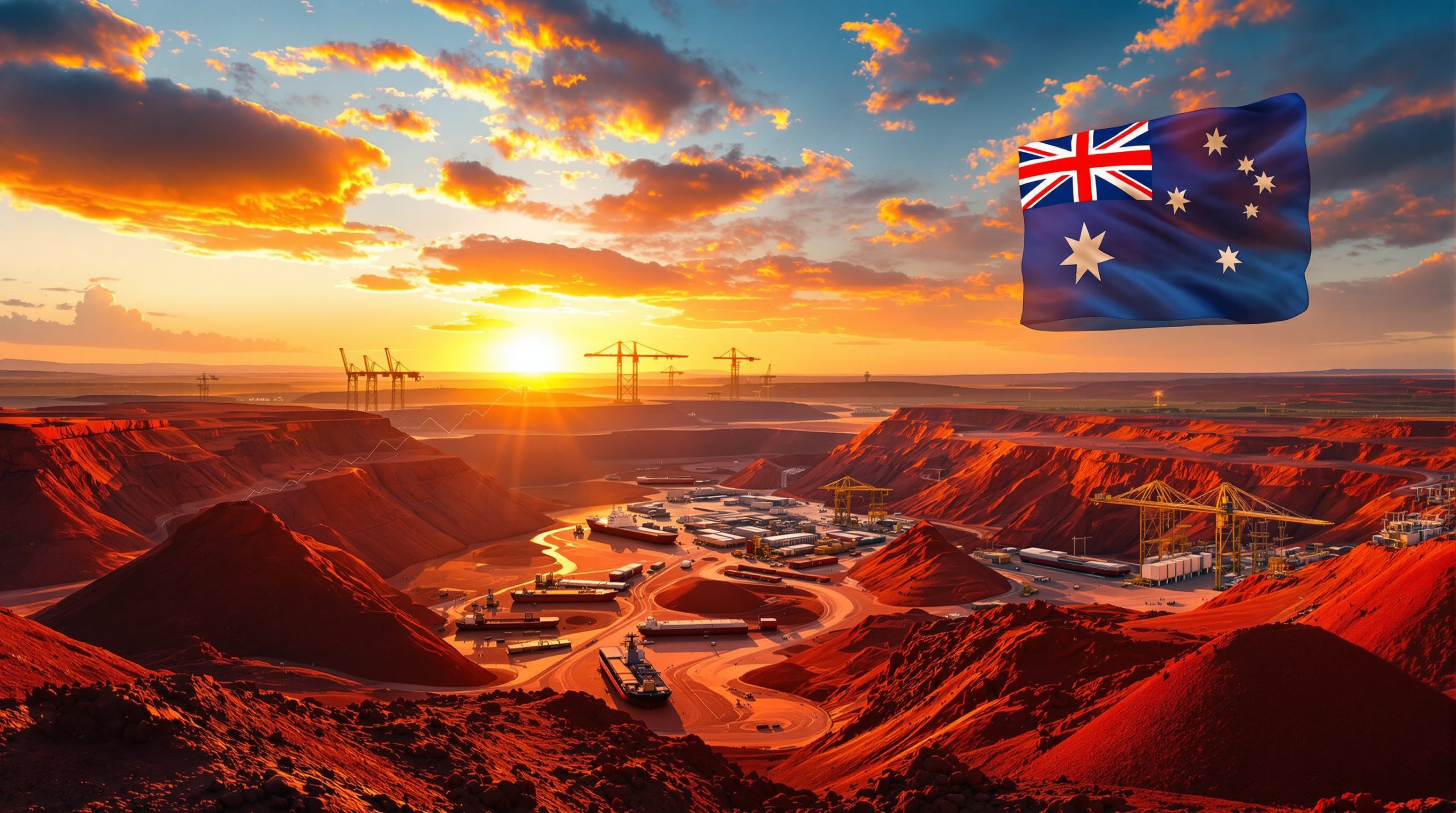Understanding Burkina Faso's Increased Stake in the Kiaka Gold Mine
Burkina Faso's government has formally requested to acquire an additional 35% stake in the Kiaka gold mine from West African Resources (WAF), triggering a trading suspension of WAF shares on the Australian Securities Exchange (ASX). This development represents a significant shift in the ownership structure of one of West Africa's largest gold operations and highlights the growing trend of resource nationalism in the region.
The acquisition would increase the government's total ownership from the current 15% to approximately 50%, fundamentally altering the project's control dynamics at a critical time in its development cycle.
Current Ownership Structure and Proposed Changes
The Burkina Faso government currently holds a 15% free-carried interest in the Kiaka mine, following recent adjustments to align with the country's updated Mining Code. This adjustment already reduced WAF's stake from 90% to 85% across all three of its Burkina Faso mining operations: Sanbrado, Kiaka, and Toega.
The additional 35% stake would be acquired through "valuable paid consideration" according to WAF's communications with the ASX, suggesting the government intends to purchase rather than simply claim this additional ownership share.
Why is Burkina Faso Increasing its Mining Stakes?
Resource Nationalism Trends in West Africa
The move by Burkina Faso aligns with a growing trend of resource nationalism across West African mining jurisdictions. Several countries in the region have revised their mining codes to ensure greater state participation and financial benefits from their natural resources.
This shift comes at a time when record gold prices have enhanced the strategic value of gold assets. The trend reflects a broader push by resource-rich nations to maximize economic benefits from their mineral wealth while reducing the perceived imbalance in profit distribution between international mining companies and host nations.
New Mining Code Implementation
Burkina Faso's request stems from provisions in its recently updated Mining Code, which enables the government to hold:
- A mandatory 15% free-carried interest in all mining projects
- An additional paid interest of at least 30% in strategic mining assets
- Rights to enforce non-discretionary dividend distributions
This regulatory framework gives the state significantly expanded rights to participate in mining ventures beyond traditional royalty and tax arrangements. The code specifically designates certain mines as "strategic assets" based on their scale, economic importance, and potential contribution to national development.
What Makes the Kiaka Gold Mine Strategically Important?
Production Scale and Economic Impact
The Kiaka gold mine represents one of Burkina Faso's most significant mining developments, with substantial potential to contribute to the national economy:
- Projected annual production of approximately 234,000 ounces of gold
- An estimated 20-year mine life based on current reserves
- Significant employment generation for local communities
- Substantial contribution to export revenues and foreign exchange
The mine's long production timeline and significant scale make it a cornerstone asset for both WAF and the Burkina Faso government, explaining the strategic interest in securing greater state participation.
Recent Development Timeline
The timing of the government's request is particularly significant as Kiaka has only recently commenced production, with first gold poured in mid-2025. This suggests a deliberate strategy to secure greater participation at the start of the project's productive lifecycle.
By increasing its stake now, the government positions itself to benefit from the entire productive lifespan of the mine rather than negotiating changes after years of production. This approach maximizes the long-term economic benefits for the country while the asset is at peak value.
How Has This Affected West African Resources?
Market Response and Trading Suspension
The announcement has created significant uncertainty for WAF shareholders and disrupted normal market activities:
- Trading was initially halted at the company's request on Thursday
- The halt transitioned to a formal suspension when WAF failed to release a detailed statement by Monday
- Share price volatility is expected once trading resumes, reflecting investor uncertainty
- The company's market capitalization and project financing may face pressure during negotiations
The trading suspension highlights the material significance of the government's request and suggests complex negotiations are underway behind the scenes as WAF weighs its response options.
Previous Corporate Adjustments
This latest development follows several other significant changes for WAF in Burkina Faso:
- The company recently aligned ownership structures across all three of its mining projects with the new Mining Code
- WAF's equity interest in each operation decreased from 90% to 85%
- New mandatory dividend distribution requirements were implemented
- The company has had to adapt operational and financial planning to accommodate these changes
These sequential adjustments reflect the evolving regulatory environment in Burkina Faso and the ongoing recalibration of relationships between mining companies and host governments.
What Financial Implications Does This Create?
Dividend Distribution Requirements
One of the most significant recent changes affecting WAF's operations in Burkina Faso involves mandatory dividend distributions. The company revealed in August 2025 that its subsidiary Somisa (which operates the Sanbrado mine) had declared a $98.35 million priority dividend to the Burkina Faso government.
This substantial payment represented 15% of retained earnings through the end of 2024 under OHADA accounting standards (Organization for the Harmonization of Business Law in Africa). The implementation of these mandatory distributions marks a significant shift from previous discretionary arrangements.
Future Profit-Sharing Structure
The company has indicated that all three of its Burkina Faso subsidiaries will be required to make annual 15% profit distributions to the state going forward, with WAF entitled to repatriate its remaining 85% share. With the proposed ownership change, this profit-sharing structure would be fundamentally altered.
If the government's stake increases to 50%, the financial equations for WAF change dramatically:
- Revenue and profit attribution would shift significantly
- Capital investment recovery timelines would extend
- Project economics and valuations would require reassessment
- Future expansion decisions would require broader consensus
These changes create a more structured and mandatory profit-sharing arrangement than previously existed, potentially affecting WAF's overall investment strategies and return profile.
What Happens Next in the Acquisition Process?
Negotiation Considerations
Several key factors will influence negotiations between WAF and the Burkina Faso government:
- The valuation methodology for the 35% stake, which could range from discounted cash flow analysis to asset-based approaches
- Payment terms and timing, including whether payments might be structured or immediate
- Management and operational control provisions, particularly decision-making authority
- Future profit distribution mechanisms beyond the standard requirements
- Environmental and social responsibility allocation
The outcome of these negotiations will set important precedents for other mining operations in Burkina Faso and potentially across the region.
Regulatory and Shareholder Approvals
For the transaction to proceed, WAF will likely need multiple layers of approval:
- Board approval based on fiduciary responsibilities to shareholders
- Potentially shareholder approval depending on the significance of the transaction
- Regulatory clearances from both Burkina Faso and Australian authorities
- Possible financing partner consents if project finance agreements are affected
The complexity of these approval requirements explains why WAF requested a trading halt while it works through the implications of the government's proposal.
How Does This Reflect Broader Mining Investment Trends?
Changing Risk Profiles in West African Mining
This development highlights evolving investment considerations for mining companies operating in West Africa:
- Increasing government participation requirements affecting project economics
- Evolving fiscal regimes with greater emphasis on state benefits
- Political stability factors influencing long-term investment decisions
- Balancing investment returns against sovereign risk
Mining companies are increasingly having to factor these changing risk profiles into their investment decisions, potentially affecting capital allocation across different jurisdictions.
Comparative Regional Approaches
Burkina Faso's approach can be compared with other resource-rich nations in the region:
- Ghana has established a relatively stable mining governance framework but has also increased fiscal pressures
- Mali has experienced significant regulatory evolution alongside political transitions
- Côte d'Ivoire has maintained a more investment-focused approach to attract mining development
These different approaches create a complex matrix of considerations for mining companies operating across multiple West African jurisdictions, requiring sophisticated risk management strategies.
What Are the Long-Term Implications for Gold Mining in Burkina Faso?
Investment Climate Considerations
The government's move raises questions about the future attractiveness of Burkina Faso to international mining investors:
- Will increased state participation deter new capital deployment?
- Can project economics remain viable with altered ownership structures?
- How will operational control mechanisms function with majority government ownership?
- What precedents does this set for other mining projects in the country?
The resolution of the WAF situation will send important signals to other mining companies considering investments in Burkina Faso.
Balancing National and Commercial Interests
The ultimate success of this ownership transition will depend on finding a sustainable balance between:
- National economic development priorities and revenue generation
- Commercial viability requirements to ensure ongoing investment
- Operational expertise needs to maximize production efficiency
- Capital investment incentives to support expansion and optimization
Finding this balance is crucial not only for WAF and the Kiaka mine but for the broader development of Burkina Faso's mining sector and economy.
FAQ: Burkina Faso's Stake in the Kiaka Gold Mine
What percentage of the Kiaka mine does Burkina Faso currently own?
The government currently holds a 15% free-carried interest in the Kiaka gold mine, following recent adjustments to align with the country's updated Mining Code.
How much additional stake is Burkina Faso seeking to acquire?
The government has requested to acquire an additional 35% stake in the mine, which would bring its total ownership to approximately 50%.
Will the government pay for the additional stake?
Yes, WAF has indicated that the government's request is for "valuable paid consideration," meaning the additional stake would be purchased rather than granted.
How has this affected WAF's stock trading?
Trading in WAF shares has been suspended on the ASX after the company failed to provide a detailed announcement addressing the government's request within the required timeframe.
What is the production capacity of the Kiaka gold mine?
The Kiaka project is expected to produce approximately 234,000 ounces of gold annually over a 20-year mine life, making it one of Burkina Faso's largest gold operations.
What other mines does WAF operate in Burkina Faso?
Besides Kiaka, WAF operates the Sanbrado mine and is developing the Toega project, all of which have recently had their ownership structures adjusted to align with the new Mining Code.
Are other mining companies in Burkina Faso facing similar ownership changes?
While specific details for other companies have not been widely reported, the Mining Code provisions apply to all mining operations in the country, suggesting other companies may face similar adjustments.
Understanding the Broader Context
The situation with WAF and the Kiaka mine reflects a broader recalibration of relationships between resource-rich African nations and international mining companies. This trend is driven by several factors including:
- Growing recognition of mineral resources as critical national assets
- Increased technical capacity within host governments to manage mining operations
- Rising commodity prices creating opportunities to renegotiate terms
- Public pressure for greater national benefits from natural resources
Mining companies operating across Africa are increasingly adapting their business models to accommodate these changing expectations while maintaining viable investment returns.
Investment Implications
For investors in mining companies operating in West Africa, these developments highlight the importance of:
- Understanding country-specific regulatory frameworks and their evolution
- Assessing the impact of changing ownership structures on project economics
- Monitoring political developments that might signal policy shifts
- Diversifying investments across multiple jurisdictions to mitigate sovereign risk
The outcome of WAF's negotiations with Burkina Faso will provide valuable insights for investors evaluating similar situations across the region.
The changing landscape in Burkina Faso's mining sector represents both challenges and opportunities. While increased government participation may create short-term uncertainty, a well-balanced partnership approach could potentially lead to more sustainable long-term operations that benefit all stakeholders. Furthermore, understanding these industry evolution trends and industry consolidation trends is crucial for investors seeking to navigate the complexities of West African mining investments. For those interested in the financial implications, comprehensive gold stock analysis can provide valuable guidance during these periods of regulatory change.
Want to Spot the Next Major Gold Discovery Before the Market?
Discovery Alert's proprietary Discovery IQ model provides real-time notifications when significant mineral discoveries are announced on the ASX, giving you a crucial edge in identifying potentially transformative opportunities like those discussed in Burkina Faso. Explore historic returns from major discoveries and begin your 30-day free trial today at Discovery Alert's discoveries page.




